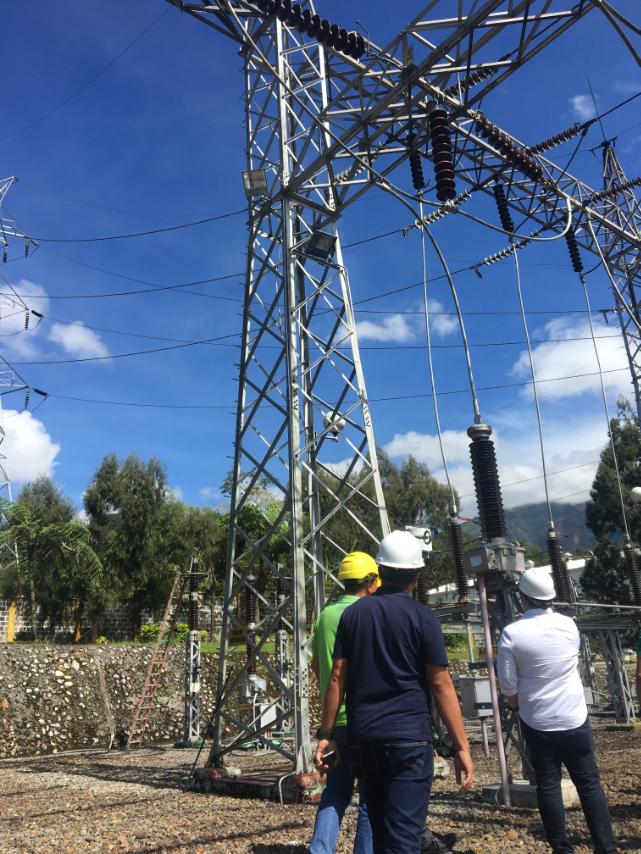
SAFETY MEASURES Members of the energy family assess the post-quake condition of NGCP's Kidapawan Substation on Monday (4 November).
KIDAPAWAN CITY, COTABATO- The Department of Energy (DOE), through its Mindanao Field Office and Electric Power Industry Management Bureau (EPIMB), conducted an on-site visit and inspection of the Mindanao Geothermal Power Plant (MGPP) on 4 November 2019, to assess the power situation and status of energy facilities after last Thursday’s (31 October) 6.5 magnitude earthquake in Tulunan, North Cotabato.
Energy Secretary Alfonso G. Cusi said, "The entire Task Force on Energy Resiliency has been working round the clock to gather relevant information and assess the situation on the ground. Our utmost priority will always be the safety of our people. We have deployed our technical team to visit and inspect the affected power facilities and coordinate with relevant agencies on the way forward.”
Mt. Apo Geothermal Power Plant’s Units 1 and 2 have not been operational due to the earthquake. Initial assessments of the DOE indicate that the power plants remain intact, despite minor damages on the switchyard equipment. However, a full site appraisal and evaluation is being conducted by Energy Development Corporation, the owner and operator of said plants.
The Kidapawan Substation of the National Grid Corporation of the Philippines (NGCP) suffered substantial damage and may take an entire month to repair. NGCP will continuously test and inspect the substation to ensure its safe operation.
While power supply in Mindanao remains stable amid the disrupted operations of Mt. Apo plants and NGCP’s Kidapawan substation, the DOE assures the public that the energy family is working together to restore these facilities at the soonest possible time.
“We have also been working with the concerned local government authorities in extending assistance to the communities, such as the provision of lighting and charging facilities, relief operations in evacuation sites, and the monitoring of vital power facilities,” Sec. Cusi concluded.
###
